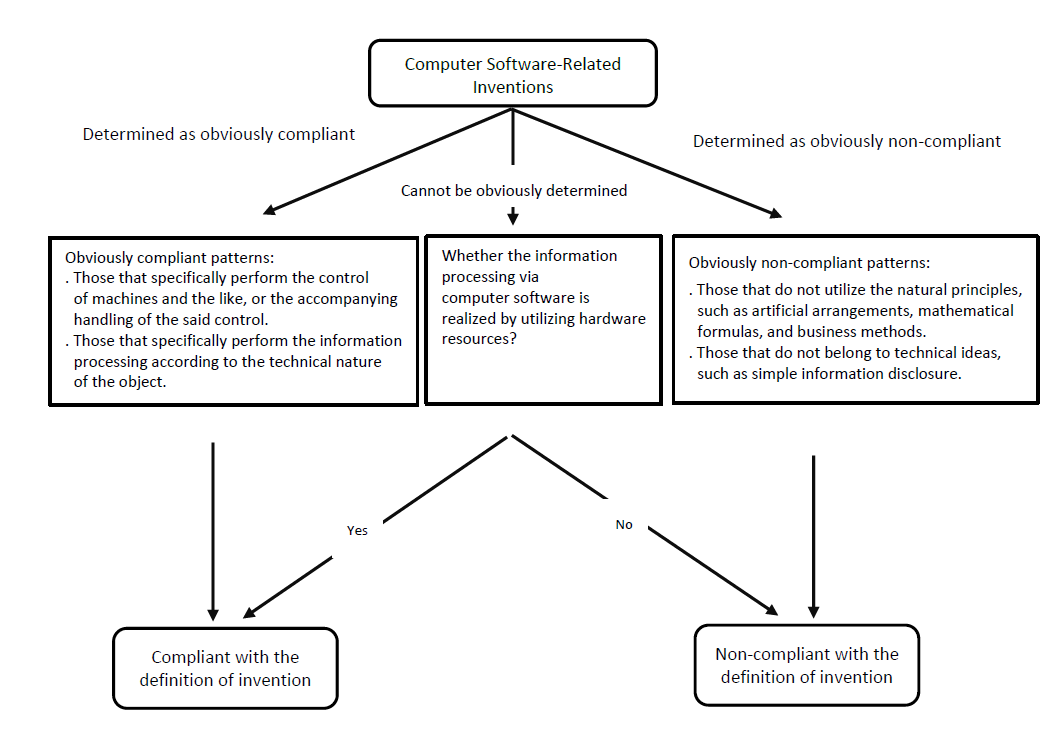Newsletter
TIPO Releases Cases and Materials on IT Patent Examination
There has been much discussion in the industry over the determination of patent eligibility for computer software, whose difficulties arise partly due to the obscurity of the rules. Substantially revised and put into effect in 2021, the “Patent Examination Guidelines, Part II, Chapter 12 Computer Software-Related Inventions (hereinafter called ‘Examination Guidelines for Computer Software-Related Inventions’)” released by TIPO adopts a more straightforward approach for the determination of patent eligibility in terms of computer software-related inventions. Additionally, in response to the increasing demand for computer software related patent applications and examinations, TIPO has prepared twenty case studies and compiled them into a brochure: “Cases and Materials on IT Patent Examination (https://www.tipo.gov.tw/tw/cp-85-900870-d6891-1.html), hereinafter called ‘Cases and Materials’).” Released on January 6, 2022, “Cases and Materials” focuses on the five major IT application fields and consists of twenty cases, including seven ones in artificial intelligence, three ones in the Internet of Things, three ones in Block-chain, three ones in Cloud application, and four ones in Big data.
The principles in determining the patent eligibility of computer software-related inventions are clearly defined in Chapter 12, Section 3 of the Examination Guidelines for Computer Software-Related Inventions, effective in 2021.

Based on the above procedure, the first step is to roughly filter the inventions whose patterns are "obviously compliant" or "obviously non-compliant." If the pattern of the invention is difficult to categorize, the next step is to determine whether the information processing via computer software is realized by utilizing hardware resources. The patterns which are "obviously compliant" include those related to the control of machines (such as the control of washing machines, engines, and hard drives) as well as the information processing (such as the information processing according to heart activity signals, engine speed, and temperature values) according to the technical (physical, chemical, biological, electrical and the like) nature of the object. On the other hand, the patterns which are "obviously non-compliant" include those that do not utilize the natural principles and those that do not belong to technical ideas. It should be noted that, as long as the claims involve the use of computers (such as CPU or any processor), the invention under determination will be temporarily classified as utilizing the natural principle and will not be considered "obviously non-compliant." In addition, by determining whether the information processing via computer software is realized by utilizing hardware resources, this criterion refers to the construction of specific information processing devices or methods for information processing through the collaboration of computer software and hardware resources.
To illustrate the process in determining the patent eligibility, a neural network system in case 6 of the Cases and Materials is cited as an example here. First, both claim 1 and claim 2 of case 6 do not perform the control of the machine or the accompanying handling of the said control. Also, the information processing defined in claims 1 and 2 is not construed as the information processing according to the technical nature of the object, so they are not "obviously compliant with" the definition of the invention. Secondly, the subject matter of both claims 1 and 2 is a "system" invention, which involves the use of computer and implies a collaboration of hardware and software; therefore, such pattern is not "obviously non-compliant." Lastly, when the claims of case 6 are judged by the element “whether the information processing via computer software is realized by utilizing hardware resources,” only claim 2 meets the definition of an invention.
The twenty case studies provided in the “Cases and Materials” not only elaborate on the process in determining the eligibility of an invention, but also detail the patent elements such as the enablement of description, whether the technical features described in the claim(s) have technical effects, the clarity of the claim(s), and how to determine the inventive step and non-obviousness of the claim(s). Consequently, patent applicants of computer software-related inventions may refer to the “Cases and Materials” so as to facilitate their patent applications, in the hope of improving the overall quality of computer software-related patent applications.

